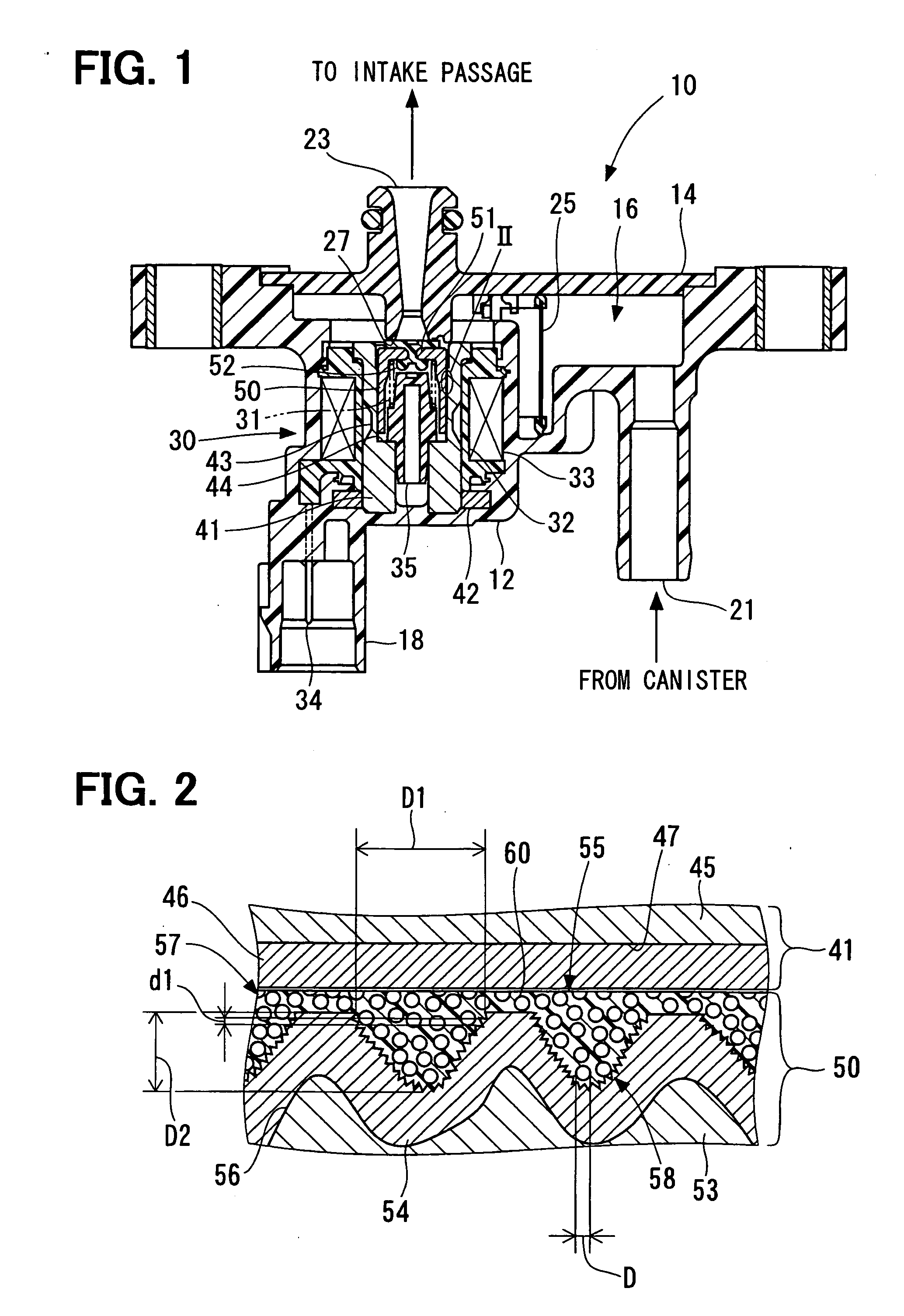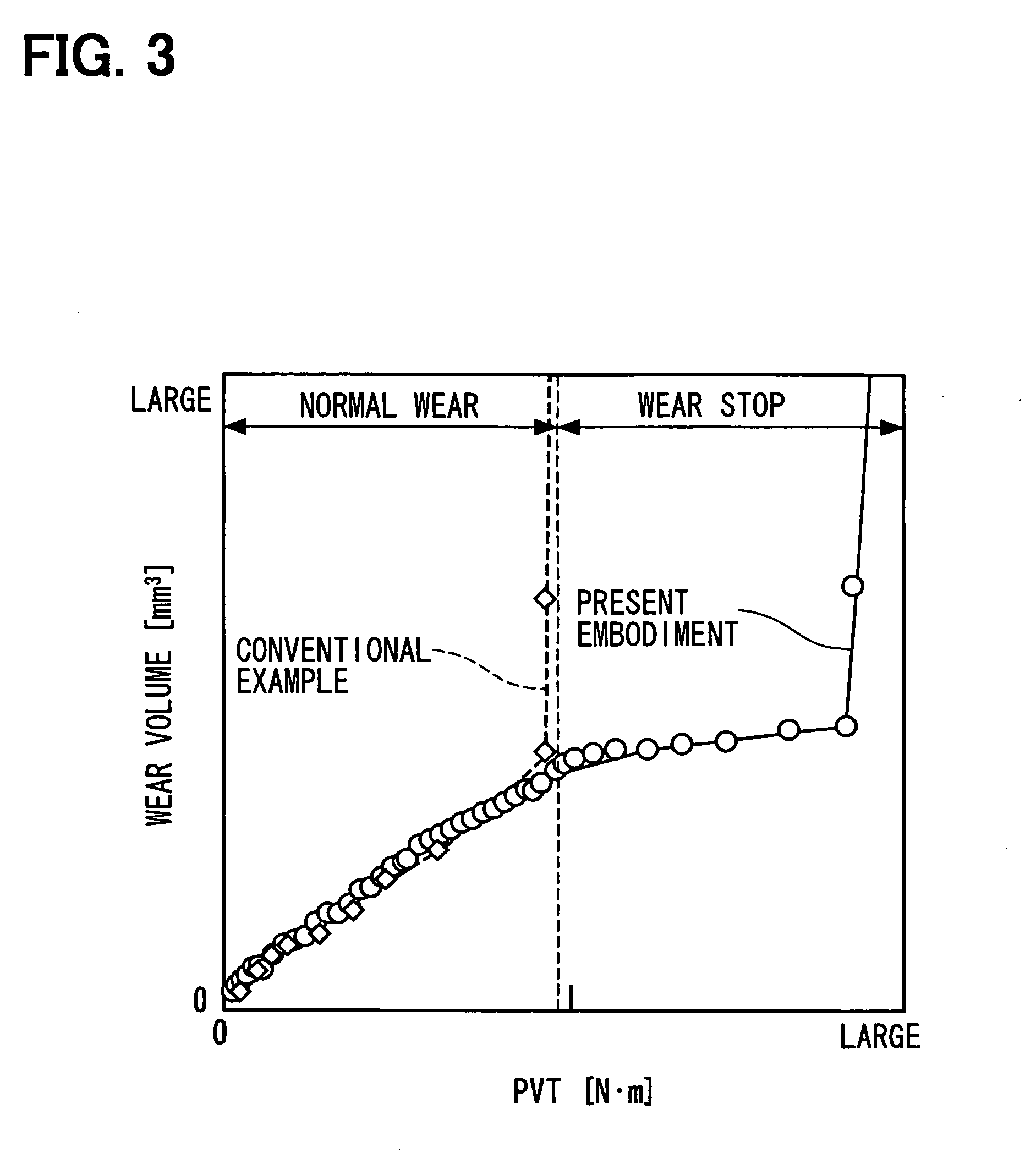Electromagnetic drive device
a technology of electromagnetic drive and drive device, which is applied in the direction of magnetic bodies, operating means/releasing devices of valves, magnetic bodies, etc., can solve the problems of friction coefficient, wear of coating portion, and exposed magnetic body of stator or moving par
- Summary
- Abstract
- Description
- Claims
- Application Information
AI Technical Summary
Benefits of technology
Problems solved by technology
Method used
Image
Examples
Embodiment Construction
[0021] An embodiment will be hereinafter explained with reference to the accompanying drawings. In this embodiment, an electromagnetic drive device is typically used for a purge valve. A purge valve 10 shown in FIG. 1 is used for an evaporative fuel treating device for treating fuel evaporated in a fuel tank (not shown), for example. The purge valve 10 is located in a purge pipe connecting a canister (not shown) to an intake passage. The purge valve 10 controls a quantity of air containing fuel vapor flowing in the purge pipe.
[0022] The purge valve 10 is provided with a body 12 and a cover 14 constituting a housing. The body 12 and the cover 14 are constructed integrally by welding, for example, and are provided with a purge passage 16 therein.
[0023] The body 12 is formed of a resin and includes an inlet port 21. The inlet port 12 is connected to a purge port of a canister (not shown). The cover 14, as similar to the body 12, is formed of a resin and includes an outlet port 23. Th...
PUM
| Property | Measurement | Unit |
|---|---|---|
| magnetic adsorbing force | aaaaa | aaaaa |
| outer diameter | aaaaa | aaaaa |
| mass | aaaaa | aaaaa |
Abstract
Description
Claims
Application Information
 Login to View More
Login to View More - R&D
- Intellectual Property
- Life Sciences
- Materials
- Tech Scout
- Unparalleled Data Quality
- Higher Quality Content
- 60% Fewer Hallucinations
Browse by: Latest US Patents, China's latest patents, Technical Efficacy Thesaurus, Application Domain, Technology Topic, Popular Technical Reports.
© 2025 PatSnap. All rights reserved.Legal|Privacy policy|Modern Slavery Act Transparency Statement|Sitemap|About US| Contact US: help@patsnap.com



